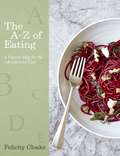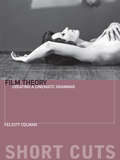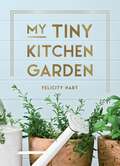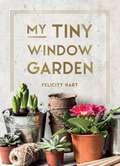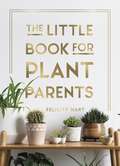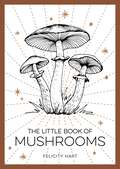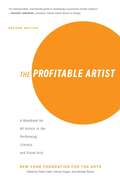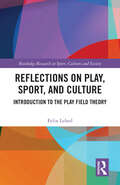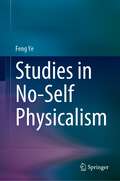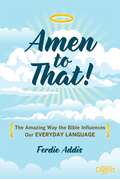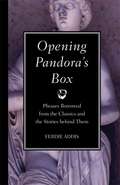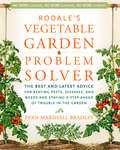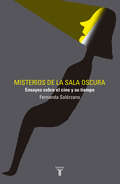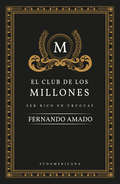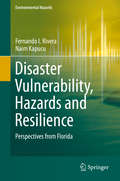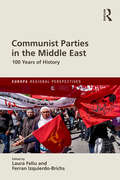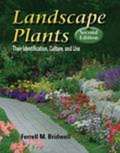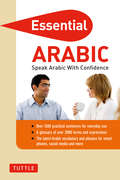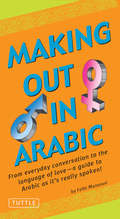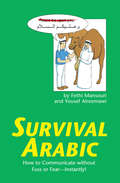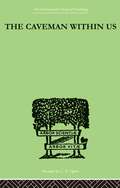- Table View
- List View
The A-Z of Eating: A Flavour Map for the Adventurous Cook
by Felicity Cloake'Full of recipes you want to cook' - Diana Henry 'Not only a collection of fabulous recipes but an inspiring guide to flavours and ingredients and how they work together' - Nigella LawsonThis is a cookbook for people who are looking for inspiration rather than instruction; one that will make you look at familiar ingredients in a new light, and welcome new ones with open arms. Here Felicity Cloake offers an ingredient for each letter of the alphabet - twenty-six of her favourite things to eat, and recipes using them which will change the way that you think about these ingredients forever. In the Blue Cheese chapter, a Roquefort and honey cheesecake with walnut and pear; in Caramel, roast duck with miso caramel and in Rhubarb, rhubarb gin granita.Yet there are also more straightforward dishes, no less original or delicious: beetroot noodles with goat's cheese, toasted walnuts and baby kale; chorizo baked potatoes with avocado crema; slow roast tomato pasta with lemon salt, ricotta and basil. And there are many more playful takes on favourite dishes: salted peanut caramel crispy cakes, aloo tikki scotch eggs, jelly cherry jubilee, buttermilk onion rings. This is a book to shake you out of your recipe rut and make you start to think about food, and cook it in an entirely new way.
Film Theory
by Felicity ColmanFilm Theory addresses the core concepts and arguments created or used by academics, critical film theorists, and filmmakers, including the work of Dudley Andrew, Raymond Bellour, Mary Ann Doane, Miriam Hansen, bell hooks, Siegfried Kracauer, Raul Ruiz, P. Adams Sitney, Bernard Stiegler, and Pier Paolo Pasolini. This volume takes the position that film theory is a form of writing that produces a unique cinematic grammar; and like all grammars, it forms part of the system of rules that govern a language, and is thus applicable to wider range of media forms. In their creation of authorial trends, identification of the technology of cinema as a creative force, and production of films as aesthetic markers, film theories contribute an epistemological resource that connects the technologies of filmmaking and film composition. This book explores these connections through film theorisations of processes of the diagrammatisation (the systems, methodologies, concepts, histories) of cinematic matters of the filmic world.
Film Theory
by Felicity ColmanFilm Theory addresses the core concepts and arguments created or used by academics, critical film theorists, and filmmakers, including the work of Dudley Andrew, Raymond Bellour, Mary Ann Doane, Miriam Hansen, bell hooks, Siegfried Kracauer, Raul Ruiz, P. Adams Sitney, Bernard Stiegler, and Pier Paolo Pasolini. This volume takes the position that film theory is a form of writing that produces a unique cinematic grammar; and like all grammars, it forms part of the system of rules that govern a language, and is thus applicable to wider range of media forms. In their creation of authorial trends, identification of the technology of cinema as a creative force, and production of films as aesthetic markers, film theories contribute an epistemological resource that connects the technologies of filmmaking and film composition. This book explores these connections through film theorisations of processes of the diagrammatisation (the systems, methodologies, concepts, histories) of cinematic matters of the filmic world.
My Tiny Kitchen Garden: Simple Tips to Help You Grow Your Own Herbs, Fruits and Vegetables
by Felicity HartYou don’t need a garden to grow your own food! This book is the perfect beginner’s guide to micro-gardening, featuring tips on how to start, what to choose and how to grow over 20 types of plant for your kitchen.Have you ever been curious about growing your own food? Do you lack a garden? Have you got limited space in your home? Then this book is for you!Whether you want to produce fresh herbs for your cooking, save money on your food bill, reduce your carbon footprint or enjoy the simple pleasure of watching something grow, My Tiny Kitchen Garden is bursting with tips and ideas to help you get started, including:The basics of micro-gardeningTroubleshooting tipsPlant profiles to help you choose what to growCraft ideas to help you style your plantsAdvice on growing food from scrapsHow to save and store seedsWhether you’re a budding gardener or a seasoned expert looking for seeds of inspiration, dive into this book to hone your green fingers and cultivate your very own tiny kitchen garden.
My Tiny Kitchen Garden: Simple Tips to Help You Grow Your Own Herbs, Fruits and Vegetables
by Felicity HartYou don’t need a garden to grow your own food! This book is the perfect beginner’s guide to micro-gardening, featuring tips on how to start, what to choose and how to grow over 20 types of plant for your kitchen.Have you ever been curious about growing your own food? Do you lack a garden? Have you got limited space in your home? Then this book is for you!Whether you want to produce fresh herbs for your cooking, save money on your food bill, reduce your carbon footprint or enjoy the simple pleasure of watching something grow, My Tiny Kitchen Garden is bursting with tips and ideas to help you get started, including:The basics of micro-gardeningTroubleshooting tipsPlant profiles to help you choose what to growCraft ideas to help you style your plantsAdvice on growing food from scrapsHow to save and store seedsWhether you’re a budding gardener or a seasoned expert looking for seeds of inspiration, dive into this book to hone your green fingers and cultivate your very own tiny kitchen garden.
My Tiny Window Garden: Simple Tips to Help You Grow Your Own Indoor or Outdoor Micro-Garden
by Felicity HartYou don't need a huge space to have a beautiful garden! This book is the perfect beginner's guide to micro-gardening, featuring tips on how to start, what to choose and how to grow over 20 types of indoor and outdoor plants.Have you ever been curious about gardening, but lacked an outdoor space? Or are you a pro gardener looking for your next creative horticultural challenge? Then this book is for you!Whether you want to attract local pollinators, grow a handy collection of herbs for your kitchen, create a relaxing indoor oasis, or enjoy the simple pleasure of watching something grow, My Tiny Window Garden is bursting with tips and ideas to help you get started. You will find: The basics of micro-gardening Troubleshooting tips Plant profiles to help you choose what to grow Craft ideas to help you style your plants Perfect for both budding gardeners and seasoned experts looking for seeds of inspiration, this book will hone your green fingers and help you cultivate your very own tiny window garden.
My Tiny Window Garden: Simple Tips to Help You Grow Your Own Indoor or Outdoor Micro-Garden
by Felicity HartYou don't need a huge space to have a beautiful garden! This book is the perfect beginner's guide to micro-gardening, featuring tips on how to start, what to choose and how to grow over 20 types of indoor and outdoor plants.Have you ever been curious about gardening, but lacked an outdoor space? Or are you a pro gardener looking for your next creative horticultural challenge? Then this book is for you!Whether you want to attract local pollinators, grow a handy collection of herbs for your kitchen, create a relaxing indoor oasis, or enjoy the simple pleasure of watching something grow, My Tiny Window Garden is bursting with tips and ideas to help you get started. You will find: The basics of micro-gardening Troubleshooting tips Plant profiles to help you choose what to grow Craft ideas to help you style your plants Perfect for both budding gardeners and seasoned experts looking for seeds of inspiration, this book will hone your green fingers and help you cultivate your very own tiny window garden.
The Little Book for Plant Parents: Simple Tips to Help You Grow Your Own Urban Jungle
by Felicity HartAll you need is love. And a plant.Whether you’re a plant lover looking for seeds of inspiration, or a beginner hoping to cultivate your very own urban jungle, this little book is bursting with tips and ideas to help you hone your green fingers and become a true plant parent.
The Little Book for Plant Parents: Simple Tips to Help You Grow Your Own Urban Jungle
by Felicity HartAll you need is love. And a plant.Whether you’re a plant lover looking for seeds of inspiration, or a beginner hoping to cultivate your very own urban jungle, this little book is bursting with tips and ideas to help you hone your green fingers and become a true plant parent.
The Little Book of Mushrooms: An Introduction to the Wonderful World of Mushrooms
by Felicity HartDiscover the fascinating world of mushrooms with this beautiful pocket guide, featuring trivia, history, identification tips, delicious recipes and moreOne of nature’s most extraordinary organisms can be found right under your feet: the mushroom. For thousands of years these fungi have intrigued humankind, providing food, inspiring folklore and proving to be both poison and cure.The Little Book of Mushrooms will allow you to uncover this mysterious kingdom for yourself. Learn the difference between a giant puffball and a scarlet elf cup and discover how mushrooms and the fungal network help plant life to communicate. You will also find:Fascinating facts about the fungi kingdomMushroom folklore from around the worldA beginner’s guide to identifying common wild mushroomsA collection of delicious mushroom-based recipes Mushrooms are vital to life on earth, and this book will be your guide to these spectacular organisms that have influenced our past and could shape our future.
The Profitable Artist: A Handbook for All Artists in the Performing, Literary, and Visual Arts (Second Edition)
by New York Arts Peter Cobb Felicity Hogan Michael RoyceThe Indispensable Roadmap Artists Need to Navigate Their Careers While all art is unique, the challenges artists face are shared regardless of background, experience, and artistic medium. With decades of experience training and helping artists worldwide, the expert staff of the New York Foundation for the Arts—in conjunction with outside professionals—have compiled a “best practices” approach to planning and organizing an art career. In The Profitable Artist, Second Edition, NYFA has identified common problems, examined specialized areas of strategic planning, finance, marketing, law, and fundraising, and distilled these topics in such a way that readers can digest them and apply them to their own experience and practice. This newly revised edition has made considerable updates to reflect changes in the legal and financial landscapes, the vast shift in the tools and culture of both social media and fundraising, and proven planning methodologies from the startup community. All of this continues to be presented in an accessible manner, which encourages artists to apply the information and techniques in a way that is true to their personal and artistic integrity. This invaluable guide appeals to artists in all disciplines of the literary, media, performing, and visual arts—from recent art school graduates to established artists undertaking new arts businesses to artists seeking more from their careers at any stage.
Reflections on Play, Sport, and Culture: Introduction to the Play Field Theory (Routledge Research in Sport, Culture and Society #141)
by Felix LebedThe psychological dependence of humanity on playing is huge. Its nature and functional utility are unclear. These linked yet contradictory issues have created the intrigue that has fed philosophical thought for more than two hundred years. During this period, philosophy transferred many of the subjects of its analysis to the aegis of the humanities that it spawned. Each of them pays close attention to human play and studies it with its own methods of theoretical and experimental research. Thus, what was once a general philosophical comprehension of human play has branched out into different directions, definitions, and theories. This new book represents a renewed general view of human play. The unique quality of the volume lies in its fairly rare interdisciplinary methodology, encompassing a broad spectrum of the humanities: philosophy, anthropology, sociology, and the history of play, and behavioral analysis of playing, which have been done by the author. As a result, the volume ends with the proposition of a new general approach to human play that is named by the author “play field theory”. Such an approach makes reflections on play, sport, and culture a source for all scholars studying play, by widening their knowledge through both a new general view and their familiarization with notions from neighboring fields and disciplines.
Studies in No-Self Physicalism
by Feng YeThis book demonstrates how a radical version of physicalism (‘No-Self Physicalism’) can offer an internally coherent and comprehensive philosophical worldview. It first argues that a coherent physicalist should explicitly treat a cognitive subject merely as a physical thing and should not vaguely assume an amorphous or even soul-like subject or self. This approach forces the physicalist to re-examine traditional core philosophical notions such as truth, analyticity, modality, apriority because our traditional understandings of them appear to be predicated on a cognitive subject that is not literally just a physical thing.In turn, working on the assumption that a cognitive subject is itself completely physical, namely a neural network-based robot programmed by evolution (hence the term ‘No-Self’), the book proposes physicalistic theories on conceptual representation, truth, analyticity, modality, the nature of mathematics, epistemic justification, knowledge, apriority and intuition, as well as a physicalistic ontology. These are meant to show that this No-Self Physicalism, perhaps the most minimalistic and radical version of physicalism proposed to date, can accommodate many aspects that have traditionally interested philosophers. Given its refreshingly radical approach and painstakingly developed content, the book is of interest to anyone who is seeking a coherent philosophical worldview in this age of science.
Amen to That!
by Ferdie AddisMany of us have never read or studied the Bible, yet people have been quoting from its pages for centuries, not knowing the origin or significance of these timeless expressions. Let there be light! Amen to That will delightfully shed clarity on how a collection of ancient stories, written in three languages over the course of a thousand years, has had such an impact on the way we speak today. Through intriguing stories and riveting tales of epic battles and acts of betrayal to miracles and beyond, you'll quickly discover the meanings behind such familiar phrases as: A drop in the bucket All things must pass As old as the hills Bite the dust Eat, drink, and be merry The powers that be Woe is me Amen to That is a wonderful look at the gripping storytelling and cultural wealth to be found in the world's best-selling book, as well as a fascinating insight into our language.
Opening Pandora's Box
by Ferdie AddisAre you known to strike like a thunderbolt when things don't go your way? Are you fortunate enough to have the Midas touch? Have you ever been struck by Cupid's arrow? Classically derived expressions are commonly used in our everyday language, yet many of us have little knowledge of the Greek and Roman influences that inspired them. With Opening Pandora's Box you'll discover the fascinating stories behind familiar phrases like Achilles' Heel, a Nemesis, To Fly too Close to the Sun, and more. For example, did you know that... The lifesaving operation known as the Caesarean section is so named because Julius Caesar was delivered by being cut out of his mother's womb? The original labyrinth was built on the orders of King Minos of Crete after Aphrodite cursed his wife to fall in love with a bull and produce a monstrous baby? The king locked the baby in a maze so complicated and tangled that, once in, he would never emerge. The word cereal is derived from the Italian corn goddess Ceres?Pry open the lid of the English language to find the secrets behind classical phrases we use every day.
Rodale's Vegetable Garden Problem Solver: The Best and Latest Advice for Beating Pests, Diseases, and Weeds and Staying a Step Ahead of Trouble in the Garden (Rodale Organic Gardening)
by Fern Marshall BradleyWith a wealth of information and tested advice, this problem-solving treasure gives gardeners every-thing they need to do battle with garden pests, diseases, and weeds—with safe, natural solutions.Combining a troubleshooting approach with encyclopedic coverage and drawing on the most up-to-date research on biological and non- or low-toxic controls, Rodale's Vegetable Garden Problem Solver features:• more than 60 vegetables, organized alphabetically from asparagus to zucchini• individual pest entries on the 30 most common insect pests and how to combat them• individual disease entries on the 30 most common vegetable plant diseases—including symptoms and causes and ways to keep plants disease-free• a problem-solving approach to such favorite gardening topics as seed-starting, soil, weather, watering, crop rotation, fertilizing, transplanting, and season extension• "Beyond the Basics" sidebars for those willing to go the extra mile to eradicate a problem in the garden in a safe and natural wayWith numerous tips on prevention so gardeners can spend less time putting out fires and focus instead on producing higher-yielding and more attractive gardens, this will quickly become the trusted companion of every vegetable gardener.
Misterios de la sala oscura: Ensayos sobre el cine y su tiempo
by Fernanda SolórzanoEl cine es a un tiempo la más joven de las artes y la que mayor influencia tiene actualmente sobre la ideología de nuestra sociedad. Ya desde el comienzo del siglo XX, Walter Benjamin reflexionaba sobre lo que supondría la masificación del arte que las nuevas técnicas de reproducción hicieron posible, y proponía que en un futuro -sin duda, el que vivimos hoy- las nuevas técnicas tenderían a la politización y ganarían un poder creciente sobre el destino de los pueblos. El filósofo alemán no vivió lo suficiente para comprobarlo por sí mismo, pero la evidencia de este hecho es patente: el cine no es sólo un reflejo del zeitgeist que lo produce, sino que puede influir él mismo en su momento histórico. Misterios de la sala oscura es una exploración razonada de la relación que tiene el cine con algunos acontecimientos clave en la historia de la humanidad, y específicamente, en la deEstados Unidos. Propone el análisis de diferentes películas, todas ellas caracterizadas por haber marcado un hito en la historia de la gran pantalla. En este libro, Fernanda Solórzano ofrece un análisis pormenorizado del contexto histórico de cada una y reflexiona, con los datos por delante, sobre el papel que tienen en el inconsciente colectivo. Algunas de las cintas que se discuten aquí son: La naranja mecánica, la cual sirve para ejemplificar la historia de la violencia tanto en el cine como en el Londres y las pandillas de Nueva York del siglo XIX; y El último tango en París, que si bien resulta conocida por la controversia que provocó, muy poco se sabe del debate feminista que originó en su época, entre otras.
El club de los millones: Ser rico en Uruguay
by Fernando Amado¿Cuánto dinero se necesita en Uruguay para ser considerado rico? ¿ Quiénes son los ricos de este país? El autor dialoga con ellos y descorre la cortina de discreción detrás de la que se ocultan. A lo largo de los años muchas cosas han cambiado en Uruguay, entre ellas lo que significa ser rico. Pero la prosperidad, el éxito económico, sigue siendo un tabú para la sociedad uruguaya, rodeado de mitos, sospechas y rumores. Intrigado por esta censura e interesado por descubrir quiénes son y cómo viven los ricos de Uruguay, gracias a decenas de entrevistas a los protagonistas, Fernando Amado procura responder a las interrogantes que todos se hacen. ¿Hay ricos en Uruguay? ¿Son quienes uno imagina? ¿De cuánto hablamos cuando hablamos de "tener plata" en Uruguay? ¿Quiénes son los más adinerados? ¿Cómo viven? ¿Qué lujos se dan? ¿Qué ventajas consiguen y qué peajes pagan? ¿Quiénes se animan a dar la cara y quiénes no? ¿Cómo han construido su fortuna y en qué rubros? ¿Quiénes son amigos de quién? Una vez más, Amado desarrolla una investigación minuciosa y exhaustiva cuyos resultados sorprenderán y fascinarán al lector.
Disaster Vulnerability, Hazards and Resilience
by Naim Kapucu Fernando I. RiveraThis monograph provides valuable lessons in building disaster resilience for rural communities and beyond. With a focus on Florida, the authors present a comprehensive review of the current debates surrounding the study of resilience, from federal frameworks, state plans and local initiatives. They also review evaluation tools and feature first-hand accounts of county emergency managers as well as non-profit and community groups on key issues, including perspectives on vulnerable groups such as the elderly, children and farm workers. Readers will find insightful answers to such questions as: How can the concept of resilience be used as a framework to investigate the conditions that lead to stronger, more sustainable communities? What factors account for the variation across jurisdictions and geographic units in the ability to respond to and recover from a disaster? How does the recovery process impact the social, political and economic institutions of the stricken communities? How do communities, especially rural ones, collaborate with multiple stakeholders (local, regional, state, national) during the transition from recovery to resilience? Can the collaborative nature of disaster recovery help build resilient communities'. The primary audiences of this book are scholars in emergency and crisis management, planning and policy, disaster response and recovery, disaster sociology and environmental management and policy. This book can also be used as a textbook in graduate and advanced undergraduate programs / courses on disaster management, disaster studies, emergency and crisis management, environmental policy and management and public policy and administration.
Communist Parties in the Middle East: 100 Years of History (Europa Regional Perspectives)
by Ferran Izquierdo Brichs Laura FeliuCommunist Parties in the Middle East: 100 Years of History One hundred years since the Russian Revolution, Communist parties have undergone great changes, in an evolution that has affected the entire Left and the social movements. Given that the impact of Communist parties and their evolution in the Middle East is a topic that has not been widely researched, Communist parties in the Middle East. 100 years of history aims to cover a century in the lives of these parties, from the moment the Communist ideology first reached the region in the early 20th century (brought by activists from minority groups) and the creation of the first parties and trades unions after the 1917 revolution, right up to the upheaval caused by the dissolution of the USSR and, more recently, the Arab Spring. The book has been designed to offer a unique, updated and comprehensive study of Communist parties in the Middle East, based on both a theoretical framework of analysis and substantial empirical research and archive documentation. Several issues are examined in this work. When the Russian Revolution took place, the Middle Eastern region as a whole was under colonial control. This meant taking decisions related to the relationship between the class struggle and the national struggle. The composition of the communist parties in the Middle East is also analysed as is their role as the vanguard –understood in the broad sense of the word– in relation to the objectives of liberation, emancipation, revolution and system change or reform, and their connection to mass or popular movements. Furthermore, the volume looks back at the dependency or autonomy of communist parties during the Cold War and the tensions that this generated in them, as well as the search for individual constructions of communism that took into account cultural characteristics and the local context of the struggle. In this respect, one of the recurring themes in the work is the relationship between communist activism and the sectors that mobilized in the name of nationalism or political Islam. Finally, the chapters trace the history of the parties, including –for the first time in the literature– the post-Cold War period and continuing to the current situation, in which communist parties occupy a residual position in the political field, sharing space with other small groups from the real Left, new programmes adapted to neoliberal advancement in the region and the new mobilizations symbolized by the uprisings of 2010-2011. The first section of the book presents the evolution of the CPs in Iran, Turkey, Iraq, Lebanon, Syria, Palestine and Israel, Egypt, South Yemen, Sudan, Algeria and Morocco. The second section explores some cross-cutting issues that have affected relations between the communist parties and other political sectors: political Islam and the New Left. Through the testimony of some leading figures, it presents the arguments around the question of gender in the Arab world and in leftist circles as well as an example of the evolution of a female leftist activist, some contradictions and the prominent debates from the most convulsive years to the present.
Landscape Plants: Their Identification, Culture, and Use (2nd edition)
by Ferrell M. BridwellIntended to help students, nursery people, landscape architects, educators, and homeowners in accurately identifying and growing an array of mostly typical woody landscape plants. A beginning chapter discusses plant identification and characteristics as well as the functional and aesthetic uses of plants. The remaining chapters present the plants, with one page of text and several passable color photos devoted to each. Information provided includes hardiness zones (mostly USDA zones 5 to 9), dimensions, fruit, texture, growth rate, culture, pest problems, habit, family, leaf and flower characteristics, selections and cultivars in cultivation, and landscape notes. Entries include ground covers; vines; dwarf, medium, and large shrubs; small, medium, and large trees; and grasses, palms, and bamboo.
Essential Arabic
by Fethi MansouriThis portable, user-friendly Arabic language guide and phrasebook is the easiest and most affordable way to learn Arabic before and during your trip. If you only want one Arabic language book--Essential Arabic is the way to go. Part of Tuttle Publishing's Essential Phrasebooks Series, it is a great first introduction and beginner guide to the language of the Arab world and is also designed as a great Arabic phrasebook, making it the most versatile Arabic language learning tool on the market.Perfect for business people or tourist traveling to the Middle East or for students who want to supplement their learning, this book's easy indexing feature allows it to act as an Arabic phrasebook or as an English-Arabic dictionary. A clever "point to" feature allows you to simply point to a phrase translated in Arabic without the need to say a single word.In this book you will find: Over 1500 practical sentences for everyday use. A glossary of over 200 terms and expressions. Extensive information about Arabic grammar and pronunciation. Latest Arabic vocabulary and Arabic phrases for smart phones, social media and more.
Making Out in Arabic: (Arabic Phrasebook)
by Fethi MansouriMaking Out in Arabic is a fun, accessible and thorough Arabic phrase book and guide to the Arabic language as it's really spoken.Anaa majnuun bihubbik! Hal mumkin an naltaqya marra ukhraa?--(I'm crazy about you! Shall we meet again?) Answer this correctly in Arabic and you may be going on a date. <P><P> Incorrectly, and you could be hurting someone's feelings or getting a slap! Arabic classes and textbooks tend to spend a lot of time rehearsing for the same fictitious scenarios but chances are while in the Middle East you will spend a lot more time trying to make new friends or start new romances--something you may not be prepared for.This Arabic phrasebook includes: A guide to pronouncing Arabic words correctly. Explanations of basic Arabic grammar, such as, pronouns questions, and negation. Romanized forms of words and phrases. Complete Arabic translations including Arabic script. Useful and interesting notes on Arabic language and culture. Lots of colorful, fun and useful expressions not covered in other phrasebooks.
Survival Arabic: How to Communicate without Fuss or Fear - Instantly!
by Fethi Mansouri Yousef AlreemawiA handy Arabic phrasebook and guide to the Arabic language, Survival Arabic contains basic vocabulary necessary for getting around.This book contains all the necessary words and phrases for speaking Arabic in any kind of setting.<P><P> Perfect for students, tourists, or business people learning Arabic or travelling to the Arab world, it also contains a beginner guide to the Arabic language, allowing for a deeper understanding of Arabic than a typical Arabic phrasebook or Arabic dictionary. The book is organized by situations where one might need to speak Arabic such as: at the hotel, in a taxi, using numbers, etc. All Arabic words and phrases are written in Romanized form as well as Authentic Arabic script (Naskh) so that in the case of difficulties the book can be shown to the person the user is trying to communicate with.This phrasebook includes:Hundreds of useful Arabic words and expressionsRomanized forms, phonetic spellings, and Arabic script (Naskh) for all words and phrasesAn introduction to the Arabic AlphabetA pronunciation guide for Arabic letters and wordsA guide to Arabic grammarA section on specific titles and place names
The Caveman Within Us: HIS PECULIARITIES AND POWERS: HOW WE CAN ENLIST HIS AID FOR HEALTH (International Library Of Psychology Ser.)
by Fielding, William JFirst Published in 1999. Routledge is an imprint of Taylor & Francis, an informa company.
